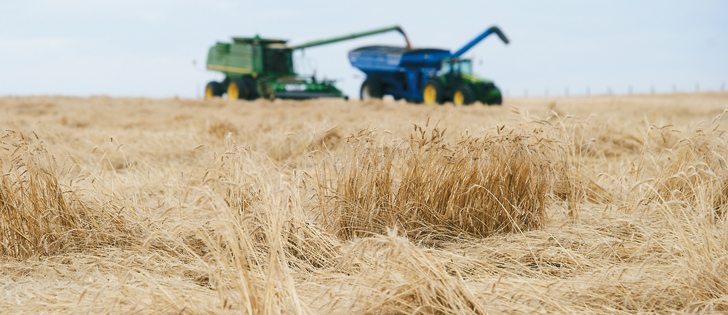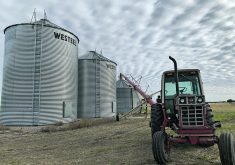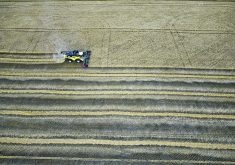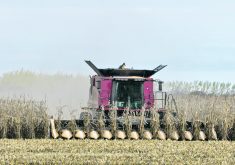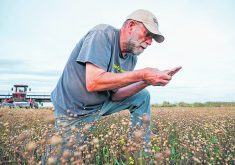Harvest work slowed | Producers who received snow in early September are finding they have to use the swather more
The best equipped farmer may be the first to cross the finish line this year.
Many producers have been challenged by flat or leaning crops after frost in mid-September, cool weather, rain and the early appearance of snow in some regions.
“It’s one of those things where definitely the newest technology as far as equipment is really paying off … but it’s still not ideal,” said Stephen Vandervalk, vice-president of the Western Canadian Wheat Growers Association.
Newer swathers are speeding up work on Vandervalk’s farm near Fort Macleod, Alta.
Read Also

Farming Smarter receives financial boost from Alberta government for potato research
Farming Smarter near Lethbridge got a boost to its research equipment, thanks to the Alberta government’s increase in funding for research associations.
“In the last five years, farmers really equipped up. If this happened five years ago, it’d be a lot worse for sure,” he said. “I would say 75 percent of farmers are equipped today to handle (it) … It takes way longer if you don’t have the right equipment.”
Like many Alberta producers, Vandervalk received snow in the second week of September, which kept him out of his fields for a week.
He’s now swathing thousands of acres that he would normally straight cut, and when the combining is running, it’s moving more slowly than normal.
Vandervalk said flatter crops challenge older swathers, but newer machines, which more closely follow the contour of the ground, perform better.
“(Conditions are) so variable. If you have flat land with no rocks, it’s going to be a nuisance but not that big of a deal,” he said. “If you have (rolling) land and rocks, it’s a huge deal because at any moment you can wreck your combine with a rock going through it, literally at any moment. So you have to swath it.”
Vandervalk said this year’s weather has been hard on malting barley, and he’s seen a lot of barley with broken heads.
Most of the canola in his area had been swathed before the frost.
“I’ve heard of some guys that they don’t have the right equipment, too, like the RotoShear (crop cutter and lifter),” he said.
“They’re having a lot of troubles … because their canola is laying flat and when you try to go through it, it just tangles up on the end of your header.”
Vandervalk said lifters work, as long as the crop is leaning in one direction.
Eldon Couey, who farms near High River, Alta., said his neighbours’ wheat fields are leaning in every direction.
“(It) is just like you’ve got a bunch of stooks out in the field, the way the snow and the wind and all that hit it,” he said.
“It’s going to be lots of fun trying to get this crop off.”
Couey, who had barley and canola left to harvest last week, is effectively using lifters on his barley but needed as many as 10 days to finish his canola.
The most recent provincial crop reports available as of press time showed harvest operations were progressing across Western Canada following a mid-month cool spell, but progress remained well below average.
Vandervalk said Sept. 19 he needed another 10 days on the combine. Last week saw the first three consecutive days of harvest operations on his farm since he started work in the third week of August.
“I think there’s been billions of dollars wiped out across Western Canada (this growing season) between all the rain and then what I would call early heavy frost,” he said.



